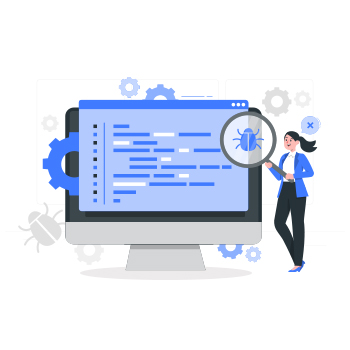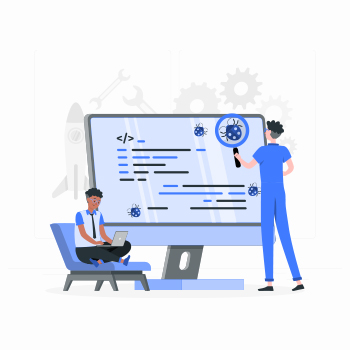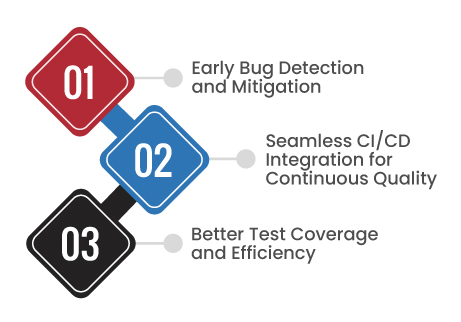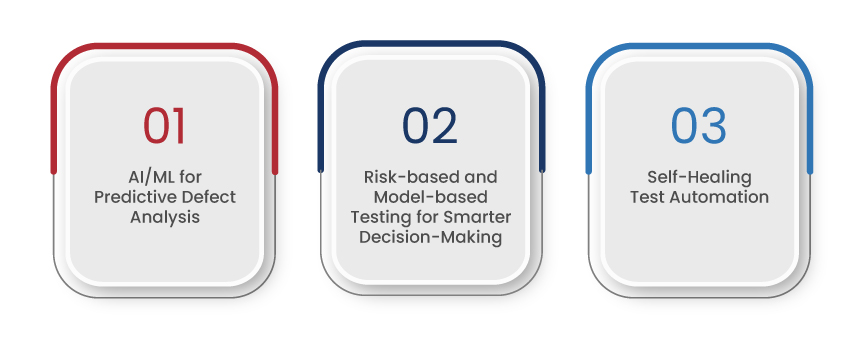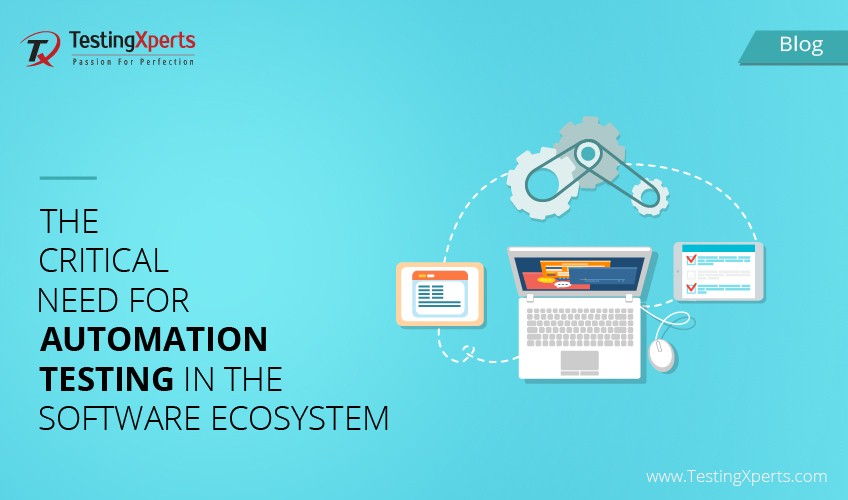
- Shift-Left Automation: An Overview
- Traditional testing vs. Shift-Left approach
- How Shift-Left Automation Enhances Software Quality?
- Smart Testing in Shift-Left Automation
- How Tx Can Assist with Shift-Left Automation?
- Summary
The industry is shifting from quality assurance to quality engineering, and automation is one of the core enablers of this transformation. Automation is no longer about executing repetitive test cases. It’s an approach to integrating quality in every step of SDLC. In this context, shift-left automation speeds up the development process by automating the early identification of issues and quality improvement. This also ensures the faster delivery of products, reduces testing costs, and enables businesses to detect and resolve defects proactively. But what makes this approach “smart”?
This blog will help you uncover this question and understand the role of intelligent testing in driving innovation.
Shift-Left Automation: An Overview
Shift-left automation involves integrating automated testing at the beginning of the software development stage. This allows teams to detect and address issues proactively and reduce the chances of defects reaching production. In modern DevOps and Agile practices, shift-left automation ensures continuous testing and integrated feedback loops. Smart shift-left automation leverages AI-driven analytics and intelligent test execution to optimize software quality and delivery timelines.
As software applications become more complex daily, traditional end-stage testing will not be enough. Shift-left automation is crucial because of the following reasons:
• Fixing defects early in SDLC stages is much cheaper than addressing them in the production environment.
• To enhance software quality, continuous testing helps detect performance, security, and functionality issues.
• Automated quality checks seamlessly integrate into CI/CD pipelines for faster releases.
• Ensures rapid iterations without compromising quality.
Aspect |
Traditional Testing |
Shift-Left Approach |
|
Testing Phase |
Happens late, usually after development is complete. |
Begins early, often during design and coding. |
|
Defect Detection |
Bugs are detected in the final stages, making fixing harder and costlier. |
Issues are caught early and remediated on time, reducing cost and effort. |
|
Testing Method |
Relies heavily on manual testing, and automation is introduced in the later stages. |
Uses automation from the initial stages to ensure the testing process is in sync with development. |
|
Development Process |
Follows a step-by-step model, leading to delays in feedback. |
Works alongside development, allowing quick adjustments. |
|
Team Collaboration |
Testing is a separate phase, handled after coding. |
Developers and QA teams work together throughout the process. |
|
Time-to-Market |
Fixing late-stage defects slows down product launches. |
Early testing prevents last-minute delays, keeping projects on track. |
|
Risk & Quality |
Late testing increases the risk of defects reaching users. |
Continuous testing ensures reliability from the start. |
How Shift-Left Automation Enhances Software Quality?
Early Bug Detection and Mitigation:
There’s a saying that “Prevention is Better than Cure.” One primary benefit of shift-left automation is that teams can catch defects before they become costlier to fix later. Teams can start with the QA process at the requirement and development stages. They can identify code errors, security gaps, and performance bottlenecks early and reduce the chances of bugs in the later stages. Integrating test automation from the beginning is the right way to prevent issues rather than just detecting them.
Seamless CI/CD Integration for Continuous Quality:
Shift-left automation embeds quality checks within the development pipeline to enable CI/CD integration. QA teams can run automated test cases with every code commit and provide instant feedback to the developers. By doing so, they can fix issues as soon as they get detected, leading to faster software release and better stability.
Better Test Coverage and Efficiency:
By syncing testing at every SDLC stage, businesses can improve test coverage across functional, UI, security, and performance aspects. Automated test suites ensure new code changes do not introduce new failures. By eliminating last-minute testing, businesses can make testing a continuous process. This will also reduce duplication and allow teams to focus on high-priority areas rather than focusing on unnecessary test cases.
Smart Testing in Shift-Left Automation
AI/ML for Predictive Defect Analysis:
AL and ML models assist with predictive analytics to identify potential defects before they occur. These models analyze past test records, patterns, and system behavior to identify areas vulnerable to failure. Teams can focus their testing activities on high-risk modules and reduce the chances of defect slippage. AI/ML-powered predictive analytics also optimize test cases and improve QA efficiency.
Risk-based and Model-based Testing for Smarter Decision-Making:
Not all test cases are a priority. Risk-based testing prefers activities based on the potential impact of failures to ensure critical functionalities are thoroughly validated. On the other hand, model-based testing utilizes visual representations of system behavior to generate optimized test scenarios.
Self-Healing Test Automation:
Frequent software updates often break automated test scripts, requiring constant maintenance. AI-enabled self-healing test automation detects application element changes and dynamically updates test scripts. This minimizes manual supervision, ensuring tests remain stable across different builds.
How Tx Can Assist with Shift-Left Automation?
At Tx, we assist our clients with implementing the shift-left approach in their agile testing methodology to speed up the development process. Our expertise in test automation, AI tools and technologies, and CI/CD integration allows us to embed QA immediately. We help our clients accelerate software delivery while keeping the risk under check. Our approach to shift-left automation includes:
• Early-stage test automation implementation
• AI-powered Predictive Testing
• Self-healing Automation
• CI/CD Integration
• Risk-based & Model-based testing
By partnering with Tx, you can achieve higher software quality, faster time-to-market, and reduced QA costs. We will help you deliver robust and reliable applications.
Summary
Shift-left automation integrates testing early in software development, enabling proactive defect detection and improving software quality. Unlike traditional testing, which occurs late in development, shift-left automation leverages AI-driven analytics, self-healing automation, and risk-based testing for more intelligent decision-making. It enhances test efficiency, ensures seamless CI/CD integration, and reduces testing costs. By embedding continuous testing, businesses can deliver high-quality software without last-minute delays. Tx empowers organizations with early-stage automation, predictive testing, and CI/CD integration, ensuring faster releases with minimized risks. To know how Tx can help, contact our experts now.
Discover more
Get in Touch
Stay Updated
Subscribe for more info

